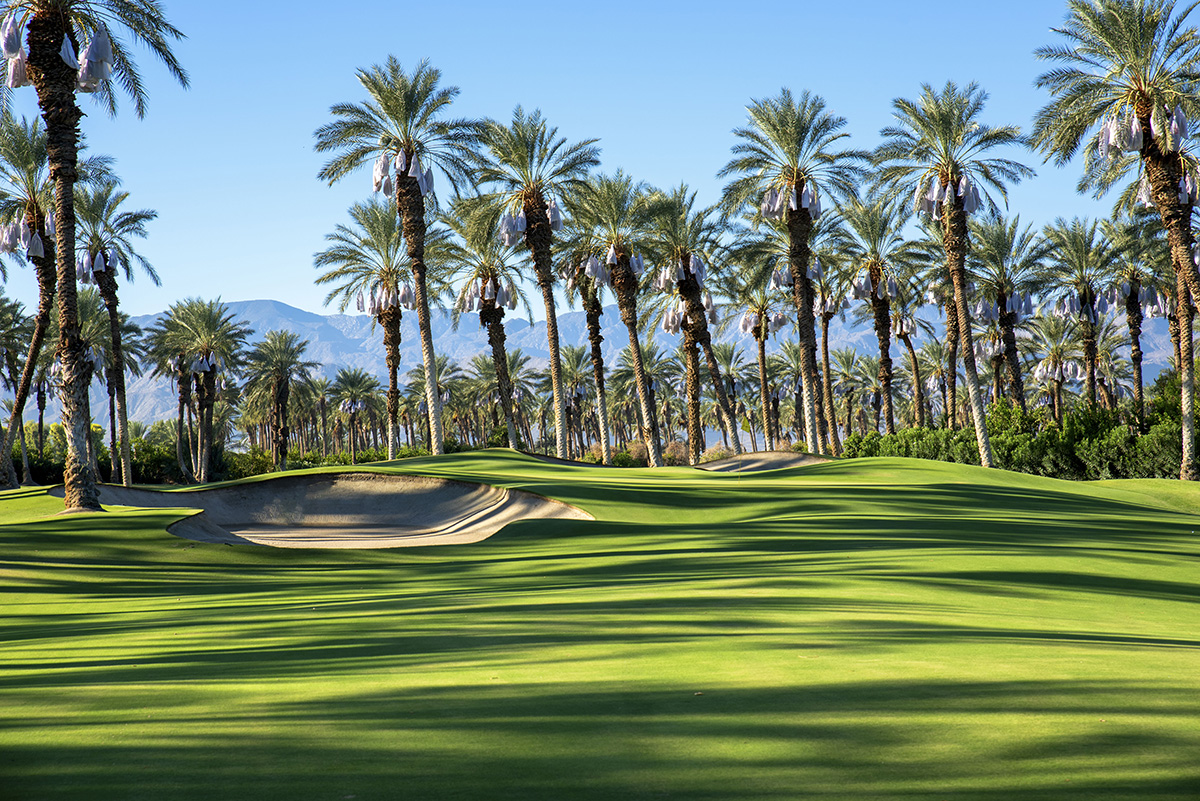Photos on Par With None
Channing Benjamin uses his trio of Tamron lenses to show America's greens from a golfer's perspective.
More Photo Tips | Video Gallery | Photo Gallery | Enewsletter sign-up
By Jenn Gidman
Images By Channing Benjamin
Before he was photographing golf courses around the US, Channing Benjamin was playing them. "I was a golfer in the mid-2000s, and I'd take a lot of pictures of the courses with my cellphone," he says. "My friends saw I had a good eye and encouraged me to get a real camera, and when I started posting photos taken with my DSLR, I got a really great reaction on Facebook and Instagram."
Because he was a concert video director at the time, Channing quickly learned to appreciate the more relaxed pace of photography, especially on the golf course. "Directing shoots for live concerts is intense," he says. "With photography, I was able to control my environment more and mellow out a bit. Combined with my personal passion for golf, it seemed natural to end up taking photos of golf courses."
Channing, a licensed golf course photographer for Pebble Beach Company, is also certified as a drone pilot, which diversifies his client offerings. "You can be somewhat limited on what you can see on the course when you're on the ground," he says. "I had taken a ladder out to some courses and captured some photos from a higher perspective, but then I saw some drone work others had done and was intrigued. To be able to take a drone photo from 40 or 50 feet up is amazing. I like to keep a balance, though, between my drone photos and those taken on the ground."
When he's on the green, Channing relies on a trio of Tamron lenses: the SP 24-70mm F/2.8 VC G2, the SP 70-200mm F/2.8 VC G2, and the 18-400mm VC. "My go-to lens is the 70-200," he says. "I purchased that lens first because, from what I'd read and seen of it, it seemed to offer terrific bang for the buck. Now, thanks to its versatile focal-length range and optical quality, I get many of my best shots with that lens. And once I had the 70-200, I wanted to be consistent, so I picked up the 24-70 and the 18-400. The 24-70 serves as the perfect portrait lens when I photograph the golfers themselves, and the 18-400 is a convenient travel lens due to its light weight, and it offers me a wider perspective when I need it. Plus, because I shoot completely handheld on the courses, the Vibration Compensation (VC) on all three lenses is critical for me."
Channing's photographic mission on the courses is to reveal the unique details of each site. "Every place is different, in both geography and history," he says. "And, because I'm a golfer myself, I try to approach many of my photos from a golfer's perspective, showing things on the course that would resonate with those who play. That's why having this arsenal of Tamron lenses is key for me, so I can capture all of these various perspectives."
When Channing does his scouting, he'll often play the courses himself. "That's my excuse to get out there, to know what I'm getting into," he says. "On the flip side, it can sometimes be good not to know too much about a course. If I know a place too well, I may not get that first-impression perspective that often gives me some of my freshest, most exciting photos. It can be fun to stumble across a scene rather than know exactly what I'm going to get ahead of time."
That golfer's perspective Channing mentioned earlier is why he took the two photos seen here of a golf bag and golf balls on the green at the Quarry in La Quinta, California. "The Quarry is on Golf Digest's top 100 golf courses list," he says. "For these two photos, I wanted to show what golf is all about. That bag doesn't have a stand on it, because it's a 'walker's bag,' which is more tied to the roots of the game—a lot of people these days ride golf carts and don't walk the course. For the golf balls photo, meanwhile, I shot it wide open, focused on the ball on the tee, and let the lens do the rest."

18-400 (82mm), F4, 1/500th sec, ISO 100
Click image to view larger

70-200mm (190mm), F/2.8, 1/2000th sec., ISO 100
Click image to view larger
And what golfer hasn't seen the inside of a sand trap? "I love that you get to see the textures of the grass and sand, and how clean and flawless it all is," Channing says. "Many of these elite courses pride themselves on how pristine they keep things. You can play in the afternoon, after 10 other groups have played before you, and you'd never know it. The sharpness and quality of the 70-200 lens here lets that flawlessness all come through."
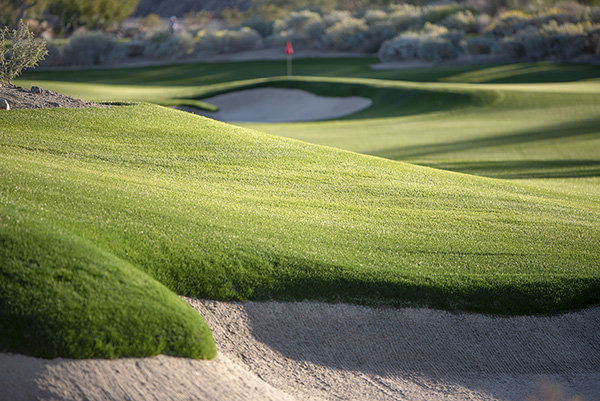
70-200mm (200mm), F/2.8, 1/500th sec., ISO 100
Click image to view larger
For the best lighting, Channing gravitates toward the beginning of the day and the end. "Light is flat in midday," he says. "I've never gotten anything of value from shooting in the middle of the day. However, if during a shoot I end up on the course in midday, I'll take advantage of that and shoot tee markers and other things that don't really need the same lighting as the landscaped shots do."
And when Channing does find the right light, it's literally golden. "There's a super-private club, near where the Coachella fest takes place, that's built inside a palm tree nursery," he says. "There are more palm trees on that course than on any other course I've seen in my life. Every hole is surrounded by palm trees like this. I took this photo in the morning and was able to capture all of these incredible shadows being cast from the trees. It's a wild shot."
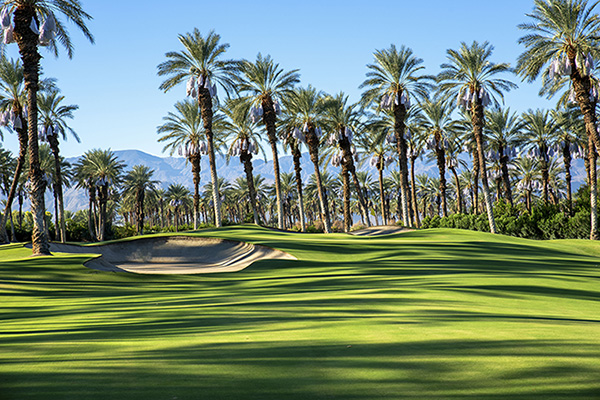
24-70mm (70mm), F/8, 1/250th sec., ISO 200
Click image to view larger
Channing also harnessed the gorgeous late-afternoon light for an image taken back at the Quarry. "I wanted to capture a bit of the desert vibe, so I placed the course's trademark cactus plants in the foreground and added some depth behind the cactus," he says. "I also love the color contrasts of greens and browns shown here."
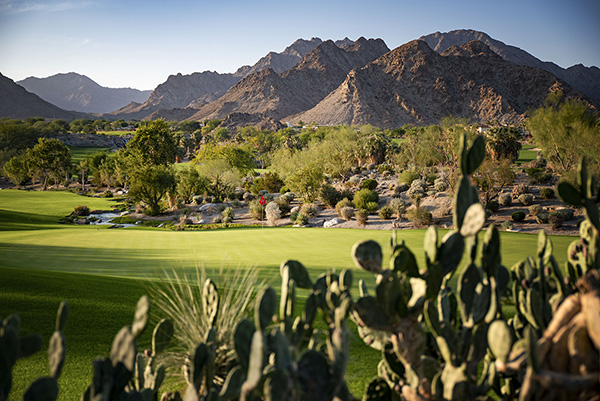
24-70mm (46mm), F/2.8, 1/1600th sec., ISO 100
He returns to some of the courses he shoots specifically for how they render in optimal lighting. "One end-of-the-day photo you see here is Ballyneal, in Holyoke, Colorado," he says. "It's another course that appears on the Golf Digest list, designed by renowned designer Tom Doak. This is kind of his flagship course. It's in the Chop Hills of eastern Colorado, and so I was trying to get a shot here where I could incorporate those hills. I also wanted to capture the evening light, because it's more amazing there than almost any other place I've been in my life."
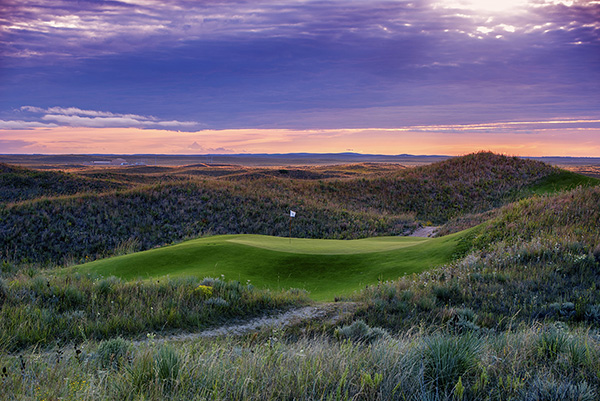
70-200mm (70mm), F/6.3, 1/200th sec., ISO 200
Click image to view larger
One thing you won't see a lot of in Channing's photos: people. "I do have some clients who want me to incorporate players or spectators into the images, but that's usually for marketing purposes to help grow their clubs," he says. "Usually, though, I feel that having people in my pictures takes away from the beauty of each place, and from letting the viewer feel a connection to it. When you're paying hundreds of dollars for a day of golf at one of these courses, you don't want a thousand people all around you—you want to feel like the place is all yours. That's the perspective I'm trying to give in my pictures."
Sometimes, though, a photo opportunity requires you to break all of your own rules, like an image Channing took at PGA West in La Quinta. "This was just a chance shot where I saw this wonderful reflection and still water, with no ducks or fountains to mess the water up," he says. "But it was midday, when I don't usually take photos, and if you look carefully, you can also see players milling about in the background. But I still had to jump on the photo opportunity, and I love the way it came out."
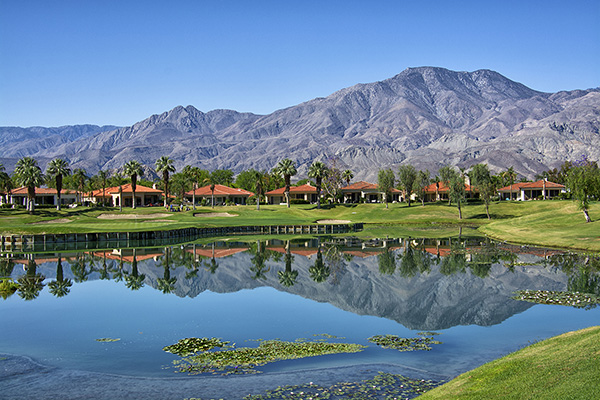
18-400mm (32mm), F/8, 1/250th sec., ISO 100
Click image to view larger
To see more of Channing Benjamin's work, go to https://channingbenjamin.photoshelter.com/index.
More Photo Tips | Watch Videos | Learn More About Tamron Lenses | Photo Gallery
